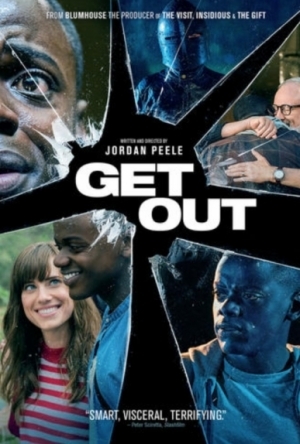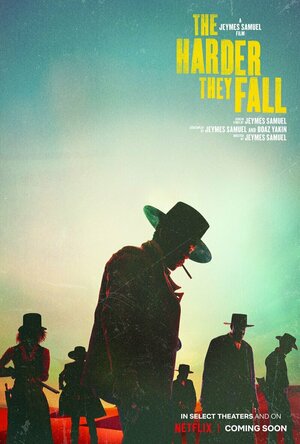
The Ideas Industry: How Pessimists, Partisans, and Plutocrats are Transforming the Marketplace of Ideas
Book
The concept of the "public intellectual" has a rich and colorful history. It began in the early...

From German Cavalry Officer to Reconnaissance Pilot: The World War I History, Memories, and Photographs of Leonhard Rempe, 1914-1921
Book
Twentyoneyearold Leonhard Rempe volunteered to serve Germany in 1914. By the time World War One...

This Old Dog by Mac DeMarco
Album Watch
Mac DeMarco (A.K.A. 26-year old MacBriare Samuel Lanyon DeMarco) will release This Old Dog, his...
Psychedelic rock pop
Bob Mann (459 KP) rated Colette (2018) in Movies
Sep 28, 2021
The plot
This is a true story, set in Paris in the late 19th Century. Colette (Keira Knightley), a beautiful country girl living in Burgundy is seduced by and then married to the much older Parisian ‘literary entrepreneur’ Willy (Dominic West). Willy is a “brand” in Paris: a well-known critic turned author. The only problem being that he does virtually no writing of his own but ghosts work out to his team. Colette exhibits a gift for writing slightly lascivious tales of her life (under the pseudonym Claudine) at her girl’s school, where clearly nighttime swimming lessons taught more than back stroke! As a result, Willy fills a financial hole by publishing Colette’s work in his name. The books fly off the shelves faster than the publishers can print them. But Willy has expensive habits and Colette gets locked into writing an ever-popular series but without a voice of her own.
Bohemian Rhapsodies
If the swinging 60’s started anywhere, it was probably in Paris during this time period! While Victorian England was staid and conservative, Paris – home of the Moulin Rouge – was a hot-bed of liberation. As a result, Colette and Willy’s marital affairs are – erm – sexually ‘fluid’. While Colette has to learn to live with her philandering ‘Free Willy’, he positively encourages the bi-sexual Colette to explore the other camp, as it were.
The turns
Keira Knightley turns in a truly cracking performance in the titular lead. No-one does ‘brooding’ better than Knightley, and she gets ample chance here to exercise that look, most notably in a train scene near the end of the film: if looks could kill.
Dominic West delivers as reliably a solid performance as you would expect from him, but he is such a despicable and loathsome character that it is difficult to warm to him.
Driving me mad (not sexually you understand…. although…) was the girl playing the American double-dip love interest Georgie: I knew her so well but just couldn’t place her. It was the American accent that threw me: she is of course Eleanor Tomlinson, Demelza from TV’s “Poldark”, here showing a lot more flesh than she can get away with on a Sunday night on BBC1!
An interesting choice of language
The film is obviously in English about one of France’s literary greats (although curiously Colette writes in French). My guess is that the film will go down like a lead balloon in France as a result. A part of me would have liked this to be French language with subtitles, but maybe that’s just me.
When you look at it objectively, Colette’s story is quite remarkable: what a clever and determined woman.
Gorgeous to look at
Aside from Knightley, the other star turn in the film comes from cinematographer Giles Nuttgens (who also did “Hell or High Water“). The scenes, particularly the bucolic ones set in the French countryside, are simply gorgeously photographed. The framing of the shots is also exquisite with an impressive shot of the slog up a spiral staircase to the couple’s flat being repeatedly used.
Sex vs violence – still not on a par in 2019
It remains curious to me how prudish both the UK and the US are still about sex on screen. In the UK the film is a 15 certificate; in the US the film is R-rated! Yes, there are some breasts on show, and a few mixed- and same-sex couplings (particularly during a frenetic 5 minute period in the middle of the film!), but they are artfully done and you don’t get to see much more than the breasts. In comparison, the violence that would get meted out during a 15/R action thriller would typically makes my eyes water.
But is it any good?
This is one of those films that is worthy, beautifully done, well acted but for some reason it felt to me like a bit of a slog. At 111 minutes it certainly felt a lot longer than it was. The middle reel of the film in particular is rather pedestrian (and yes, I recognise the irony of the fact that I just said there was the frenetic 5 minutes of sex during that part!). Maybe on the night I was just not in the mood for this type of film.
The director is Englishman Wash Westmoreland, whose last film back in 2014 was the impressive “Still Alice”.
I’m glad I’ve seen it, and it is a lot better than many films I saw last year. But in terms of my “re-watchability” quotient, its not going to rate that highly.
Beyond Shareholder Wealth Maximisation: Towards a More Suitable Corporate Objective for Chinese Companies
Book
Corporate objective, namely, for whose interests should a company be run, is the most important...
Bob Mann (459 KP) rated Get Out (2017) in Movies
Sep 29, 2021
“Get Out” was written and directed by Jordan Peele and was his directorial debut. And a hot item on his resume it is too.
Daniel Kaluuya (“Sicario”) plays African-American Chris Washington who, nervously, takes a trip ‘upstate’ to meet the parents of his cute white girlfriend Rose (Allison Williams). The parents, Dean (Bradley Whitford, best known as Josh Lyman from “The West Wing”) and Missy (Catherine Keener, “ Captain Phillips”), are extremely welcoming.
But the weekend coincides with an “annual gathering” of family and friends, and events quickly take a left turn into “The Twilight Zone”, with anti-smoking hypnosis and a bizarre game of Bingo where the win is so substantial that playing becomes a ‘no brainer’. Can Chris ‘Get Out’, with his mind still intact, before it’s too late?
This is a really clever script by Peele. The film baits you into thinking this is some redneck-inter-racial-revenge flick, but actually the colour of the skin is almost irrelevant. (Or is it? This angle is left deliciously vague). Some of the filming is spectacularly creepy, with the hypnosis scene being reminiscent to me of the excellent “Under The Skin”. And never has a teaspoon in a cup of tea been a more devastating weapon.
I seemed to have talked at length this year in this blog on the subject of the “physics of horror”: the story elements hanging together in a satisfying – albeit sometimes in an unbelievable – way. “Get Out” delivers this to perfection, keeping its powder dry until the closing moments of the film before delivering a series of satisfying “Ah!” relevatory moments.
While the ‘physics’ of the film is good the ‘biology’ is bonkers, featuring a plot point from the terrible first episode of the 3rd season of the original “Star Trek” (if you can be bothered to look that up!). But I’ll forgive this, parking my incredulity, to salute what I think is one of the year’s most novel and impressive low-budget indie horror films.
Purple Phoenix Games (2266 KP) rated Tumble Town in Tabletop Games
Mar 5, 2020
Tumble Town is dice rolling, structure building, drafting game with variable player powers. You are charged with choosing building plans to be added to Main Street of Tumble Town. You do this throughout the game by selecting the plans that will make best use of the resources (dice) you gain. The buildings that you construct may allow you special powers to be used on future turns, or one-time bonuses to be used once built. The player who can turn the greatest profit (in terms of VP) at the end of the game will be the winner!
DISCLAIMER: We were provided a prototype copy of this game for the purposes of this review. These are preview copy components, and the final components will definitely be different from these shown. Also, it is not my intention to detail every rule in the game, as there are just too many. You are invited to back the game through the Kickstarter campaign, from your FLGS, or through any other retailers stocking it after fulfillment. -T
To setup, deal each player a packet of starting components: a unique Horse card, two reference cards, Storehouse card, Main Street card, and two brown (they are red in the prototype) dice to be rolled and placed within the Storehouse. Shuffle and display the 1-, 2-, and 3-cactus building cards per the rulebook instructions to form the market. Set aside a number of each die type per the rulebook (both the building cards and dice are determined by number of players). Determine the first player and give them the first player token (a colorful rubber potted cactus). Players will connect their two Main Street cards at the central icon to create a two-card street (we chose the wagon wheel – Easy) and the game can begin!
Turns in Tumble Town consist of four mini-phases that flow into each other rather naturally. The first phase will have the players choosing a revealed building plan card from the offer market. The face-down draw stack will inform the active player as to how many and which type of dice they must draw and roll. Once they have these dice in their Storehouse, the player may now build plans using the dice they control. Buildings can be constructed and placed right onto Main Street, or be placed on the plan card to be placed on Main Street on a later turn. If the player has collected more dice than their Storehouse can hold, they must discard any of the dice they wish. This concludes a turn and the next player can begin their turn.
Certain iconography on the building plan cards allow players to use special powers throughout the game once built, and there are three types. Cards with the silvery bottom panel of symbols and the 1x notation are powers that must be used only once and only when the building is constructed. These powers could be collecting a die of the player’s choice, or receiving various dice counters. The building plan cards that feature a circular arrow notation are powers that can be used once per turn, every turn, if wished. These powers are found on each player’s Horse as well and can be adjusting a die’s face value, or re-rolling two dice, as examples. The third type of power is from the golden paneled cards that have an arrow pointing to a vertical line. These powers are only activated at the end of the game and mostly include scoring variances, like 1VP for each building a player has constructed that has a vulture icon (or a windmill, for example) featured on the card art.
Once a building is erected, the player may choose to place it onto their Main Street cards. When they place them, the player will need to choose where on Main Street these buildings should live. Like Bob Ross always says, “There are no mistakes, just happy accidents.” A player can place their buildings anywhere they wish on Main Street, but the Main Street cards will give extra bonuses to those players who plan ahead and place their buildings strategically. Some plots will ask for a building of a specific height (one die high or three dice high). Some will ask for the base level of the structure to be made of a specific material/die color (brown wood, black coal, silver metal, and gold… gold). Extra points are awarded if one-die-width alleyways are allotted, and these Main Street placements can score a bunch of endgame points.
Turns can be very quick or very deliberate, depending on the types of players involved. AP-prone players will take longer on their turns as they internalize all possibilities of their rolled results, while people like me just fly by the seats of our breeches. The game continues in this fashion: four mini-phases of drafting cards from the market, grabbing the associated dice, rolling them, and attempting to erect the best buildings on Main Street until two dice pools contain two or fewer dice. The current turn order finishes and the game is over.
Components. Again, this is a prototype copy of the game, and the publisher was decent enough to include a listing of items to be improved in the final version (like the red dice being poured brown in final – that really messed up someone’s strategy during a play-through for us because they kept forgetting that red is actually brown). The overall art style is very simplistic and I do NOT mean that negatively. The graphics and artwork are great, and give exactly what is needed without being so distracting that you cannot concentrate on your strategy. The dice are normal dice quality (that always seem to roll poorly when I’m rolling… hmm…). Once you see the photos of how the game will look during production, you will appreciate how great this is going to look on the table. No problems with components at all, save for the red vs. brown debacle that happened on our table. I really hope they keep the awwwwesome rubber cactus first player marker because it’s amazing.
I absolutely loved this one. I have always enjoyed using items for purposes other than originally intended – in this case, using dice as building materials. Of course, playing any game with dice introduces a bit of luck and instability in strategy, but Tumble Town offers quite a bit of manipulation of dice rolls that keeps almost all dice results feasible and useful. I really enjoyed the stacking, the quick turns, and the desperation when someone takes the last wood die when I was gunning for a wood-based building on my next turn. This game is light, but is chocked full of difficult decisions and luck of the roll. Tumble Town is for people who enjoy the rolling and stacking from FUSE (minus the frenzy), and the spatial building placement chaining of Villages of Valeria.
If this is the game for you, then we highly encourage you to check out the Kickstarter campaign which is running until Thursday, March 26. Tumble Town has already exceeding the funding goal at time of this review, but all future pledges will contribute to stretch goals that will improve components and add other components (spoiler?). So get out there and build up Tumble Town, ya yella-bellied greenhorns!
Red Devils Over the Yalu: A Chronicle of Soviet Aerial Operations in the Korean War 1950-53
Stuart Britton and Igor Seidov
Book
The Korean War (1950-1953) was the first - and only - full-scale air war in the jet age. It was in...

GPS navigation BE-ON-ROAD
Navigation and Travel
App
FREE GPS Offline Map & Navigation. FREE updates for both app and maps. FREE license for...
BankofMarquis (1832 KP) rated The Harder They Fall (2021) in Movies
Nov 13, 2021
And, in the case of the Netflix Original Film THE HARDER THEY FALL, I was rewarded for my patience.
Based on real-life African-American characters - and with an All-Black Cast - THE HARDER THEY FALL tells the tale of 2 rival gangs in the “Old West” (circa 1880 or so) as they rob, cheat, outsmart and kill each other.
This 2 1/2 hour epic has 2 distinct parts. The first 2 hours is all set up. A film that looks like a pale imitation of a Quentin Tarantino film by Writer/Director Jaymes Samuel (best known as collaborating with Baz Luhrman and Jay Z on the soundtrack for THE GREAT GATSBY). He is clearly influenced by Tarantno and tries to mimic Tarantino’s style - and, like most imitators - falls short mainly because he focused on the style and not the substance of what Tarantino does.
He populates this film with some of the finest Black Actors working today - Idris Elba, DelRoy Lindo, Jonathan Majors, Lakeith Stanfield and Zazie Bettz are all underutilized during the first 2 hours of this film and I had myself wondering why they agreed to do this film.
And then came the last 1/2 hour.
The final portion of THE HARDER THEY FALL is about as good a piece of film-making that you will see, with the showdown between the 2 rival gangs really paying off and Majors, Lindo and Elba (especially) finally get their chance to shine - and answers the question as to why these fine performers were in this film. It’s as if Samuels had a great ending in mind and patched together a film (and plot) that would get the characters to that point.
And then there is the case of Regina King - who was acting in a different kind of film all along. She reigns in this film like a true MOVIE STAR, commanding the screen - and your attention - whenever she shows up. She has a wonderful monologue in the underwhelming first 2 hours of this film - that is worthy of Tarantino - and shows why King is undeniably a MOVIE STAR. This monologue alone almost makes the first 2 hours bearable.
You will have a conundrum when contemplating seeing THE HARDER THEY FALL. Will you be willing to sit through 2 hours of a B- film (a “C” film, if it wasn’t for King) to, finally, be rewarded with an A+ ending?
The choice is yours.
Letter Grade: B
7 stars (out of 10) and you can take that to the Bank(ofMarquis)




